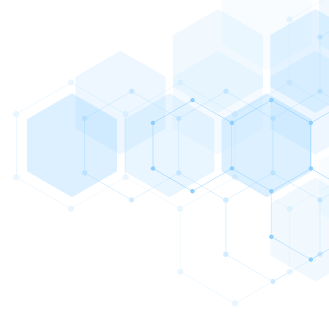DESCRIPTION
Bortezomib
CLASSIFICATION Proteasome inhibitor
MECHANISM OF ACTION
• Reversible inhibitor of the 26S proteasome.
• The 26S proteasome is a large protein complex that degrades ubiquitinated proteins. This pathway plays an essential role in regulating the intracellular
concentrations of various cellular proteins.
• Inhibition of the 26S proteasome prevents the targeted proteolysis of ubiquitinated proteins, and disruption of this normal pathway can affect multiple signaling pathways within the cell, leading to cell death.
• Results in downregulation of the NF-κB pathway. NF-κB is a transcription factor that stimulates the production of various growth factors, including IL-6, cell adhesion molecules, and anti-apoptotic proteins, all of which
contribute to cell growth and chemoresistance. Inhibition of the NF-κB pathway by bortezomib leads to inhibition of cell growth and restores chemosensitivity.
ABSORPTION
Administered only by the intravenous and subcutaneous routes. Total systemic exposure is equivalent for intravenous and subcutaneous administration.
DISTRIBUTION
Volume of distribution not well characterized. About 80% of drug bound to plasma proteins.
INDICATIONS
1. FDA-approved for the treatment of multiple myeloma.
2. FDA-approved for the treatment of mantle cell lymphoma after at least one prior therapy.
DOSAGE RANGE
Recommended dose for relapsed multiple myeloma and mantle cell lymphoma is 1.3 mg/m2 administered by IV or SC twice weekly for 2 weeks (on days 1, 4, 8, and 11) followed by a 10-day rest period (days 12–21).
DRUG INTERACTION 1
Ketoconazole and other CYP3A4 inhibitors—Co-administration of ketoconazole and other CYP3A4 inhibitors may decrease the metabolism of bortezomib, resulting in increased drug levels and potentially increased toxicity.
DRUG INTERACTION 2
CYP3A4 inducers—Co-administration of bortezomib with potent CYP3A4 inducers, such as rifampin, may increase the metabolism of bortezomib, resulting in decreased drug levels.
DRUG INTERACTION 3
St. John’s Wort may alter the metabolism of bortezomib, resulting in decreased drug levels.
SPECIAL CONSIDERATIONS
1. Contraindicated in patients with hypersensitivity to boron, bortezomib, and/or mannitol.
2. Use with caution in patients with impaired liver function because drug metabolism and/or clearance may be reduced. Patients with mild hepatic impairment do not require dose modification.However,patients with moderate or severe hepatic impairment should be started at a reduced dose of 0.7 mg/m2 in the first cycle. Depending on patient tolerability, the dose can be either increased to 1 mg/m2 or further reduced to 0.5 mg/m2 in subsequent cycles.
3. The pharmacokinetics of bortezomib are not influenced by the degree of renal impairment. Therefore, dosing adjustments of bortezomib are not necessary for patients with renal dysfunction.Since hemodialysis may reduce bortezomib concentrations, the drug should be administered after the dialysis procedure.
4. Use with caution in patients with a history of syncope, patients who are on antihypertensive medications, and patients who are dehydrated because bortezomib can cause orthostatic hypotension.
5. Bortezomib should be withheld at the onset of any grade 3 non-hematologic toxicity,excluding neuropathy,or any grade 4 hematologic toxicities.
After symptoms have resolved,therapy can be restarted with a 25% dose reduction.With respect to neuropathy,the dose of bortezomib should be reduced to 1 mg/m2 with grade 1 peripheral neuropathy with pain or grade 2 peripheral neuropathy.In the presence of grade 2 neurotoxicity, therapy
should be withheld until symptoms have resolved and restarted at a dose of
0.7 mg/m2 along with changing the treatment schedule to once per week. In the presence of grade 4 neurotoxicity, therapy should be discontinued.
6. The use of SC bortezomib may be considered in patients with pre-existing neuropathy or in those at high risk of developing peripheral neuropathy.
7. Patients should avoid taking green tea products and supplements, as they have been shown to inhibit the clinical efficacy of bortezomib.
8. Patients should avoid taking St. John’s Wort, as it has been shown to increase the metabolism of bortezomib, leading to lower effective drug levels.
9. Pregnancy category D. Breastfeeding should be avoided.
TOXICITY 1
Fatigue, malaise, and generalized weakness. Usually observed during the first and second cycles of therapy.
TOXICITY 2
GI toxicity in the form of nausea/vomiting and diarrhea.
TOXICITY 3
Myelosuppression with thrombocytopenia and neutropenia.
TOXICITY 4
Peripheral sensory neuropathy, although a mixed sensorimotor neuropathy has also been observed. Symptoms may improve and/or return to baseline upon discontinuation of bortezomib.
TOXICITY 5
Fever (> 38°C) in up to 40% of patients.
TOXICITY 6
Orthostatic hypotension in up to 12% of patients.
TOXICITY 7
Congestive heart failure (CHF) and new onset of reduced LVEF. Rare cases of QT interval prolongation.
TOXICITY 8
Pulmonary toxicity in the form of pneumonitis, interstitial pneumonia, lung infiltrates, and acute respiratory distress syndrome (ARDS). Pulmonary hypertension has also been reported.
TOXICITY 9
Reversible posterior leukoencephalopathy syndrome (RPLS) is a rare event and presents with headache, seizure, lethargy, confusion, blindness, and other visual disturbances.
SPECIFICATION


Login To Comment